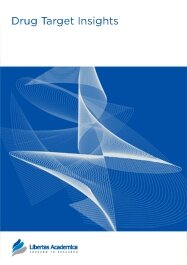

Publication Date: 22 Mar 2007
Journal: Drug Target Insights

Background: Phospholipases A2 (PLA2) are aggressive enzymes that can destroy phospholipids of cell membranes. The resulting cell fragments trigger the kallikrein—mediated contact phase of coagulation. The aim of the present study was to expose citrated whole blood to PLA2 and to quantify thrombin generation in recalcified plasma.
Methods: Normal citrated blood was exposed to bovine pancreatic or snake PLA2, lipopolysaccharide (LPS), or zymosan A for 30–45 min (RT). After centrifugation the plasma samples were recalcified (10 + 1) with 250 mM CaCl2 in the recalcified coagulation activity assay (RECA). After 0–45 min coagulation reaction time (CRT at 37°C) 1.6 M arginine (final test concentration) was added to stop hemostasis activation and to depolymerize non-crosslinked fibrin. The generated thrombin activity was chromogenically determined.
Results: 100 ng/ml bovine pancreatic or snake PLA2 generates about 0.2–0.8 IU/ml thrombin after 15 min CRT. This thrombin generation is similar as that induced by 200 ng/ml LPS or 20 μg/ml zymosan A. Up to 60 ng/ml bovine pancreatic PLA2 the generated thrombin activity is proportional to the PLA2 activity used; 1 μg/ml PLA2 induces much less thrombin, but PLA2 at 10 μg/ml again results into thrombin generation of 0.1–3 IU/ml at 10–15 min CRT. As control, in pooled normal citrated plasma there is no significant change in thrombin generation when exposed to up to 10 μg/ml bovine pancreatic PLA2.
Discussion: Elevated plasmatic PLA2 activities (occurring e.g. in trauma, pancreatitis, or sepsis) activate the blood hemostasis system resulting in pathologic disseminated intravascular coagulation (PDIC). It is suggested to diagnose these life threatening states as early as possible, screening all patients for plasmatic thrombin activity.
Abbreviations: ΔA/t, absorbance increase per time; CRT, coagulation reaction time (37°C); CS-IIa, chromogenic substrate HD-cyclohexylglycyl-alanyl-arginyl-paranitroanilide for thrombin; F-well, fl at bottom well Polysorp®; IU, international units; LPS, lipopolysaccharide; mA, milli absorbance units; PDIC, pathologic disseminated intravascular coagulation; PLA2, phospholipase A2; RECA, recalcified coagulation activity assay; RT, room temperature; sPLA2, secretory PLA2; U, units; ZyA, zymosan A.
PDF (1.71 MB PDF FORMAT)
RIS citation (ENDNOTE, REFERENCE MANAGER, PROCITE, REFWORKS)
BibTex citation (BIBDESK, LATEX)
XML
PMC HTML
I have had contact with Drug Target Insights several times, and every time I am impressed by the handling of the manuscript. The website is very, very user-friendly. It is easy to submit a manuscript. The entire process is easy and straightforward. The corresponding author is kept updated on the progress at every point. The editors of Libertas were helpful and prompt in responding to questions and issues related to the submission I am pleased ...

All authors are surveyed after their articles are published. Authors are asked to rate their experience in a variety of areas, and their responses help us to monitor our performance. Presented here are their responses in some key areas. No 'poor' or 'very poor' responses were received; these are represented in the 'other' category.See Our Results
Copyright © 2013 Libertas Academica Ltd (except open access articles and accompanying metadata and supplementary files.)
FacebookGoogle+Twitter
PinterestTumblrYouTube